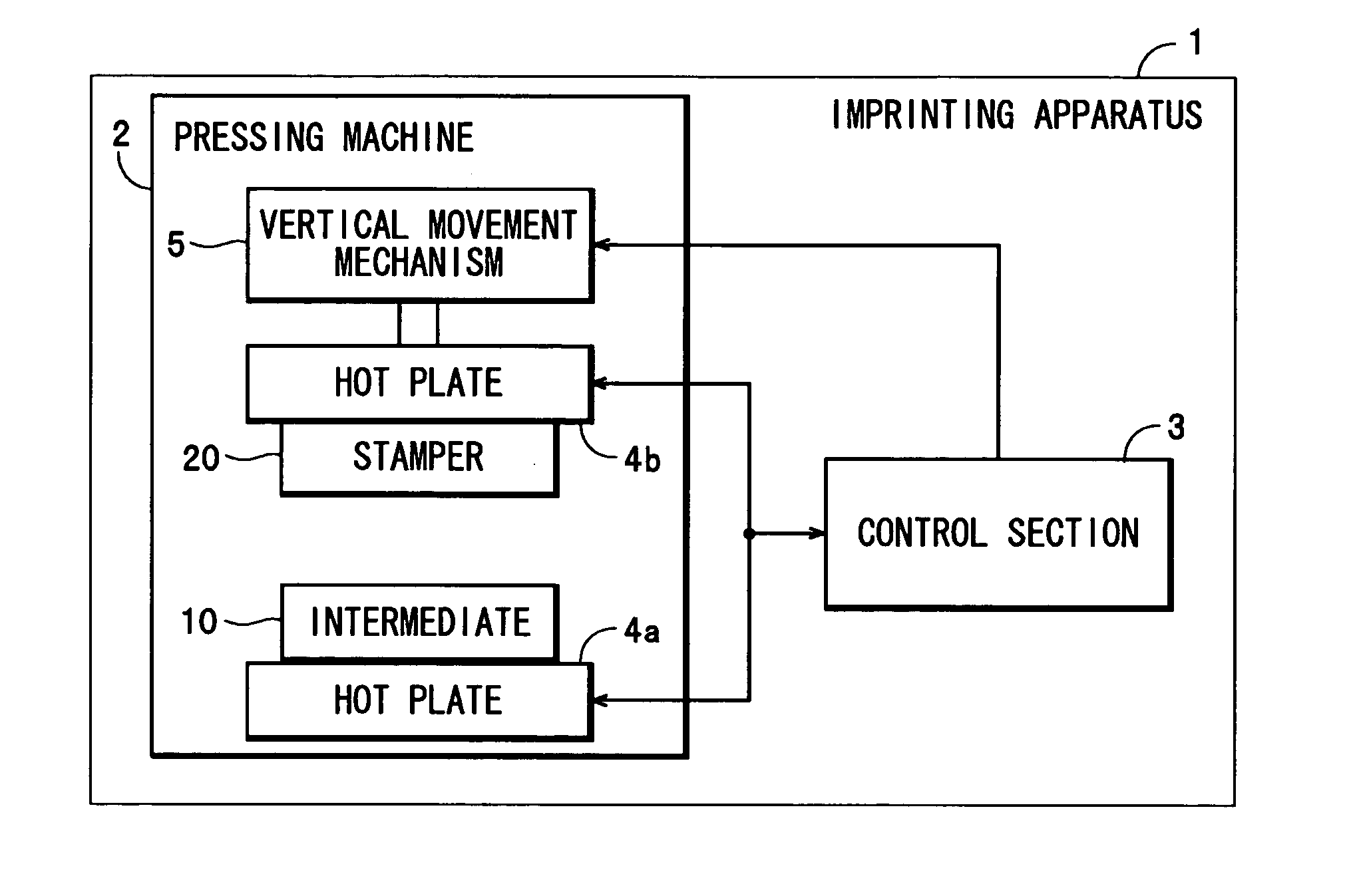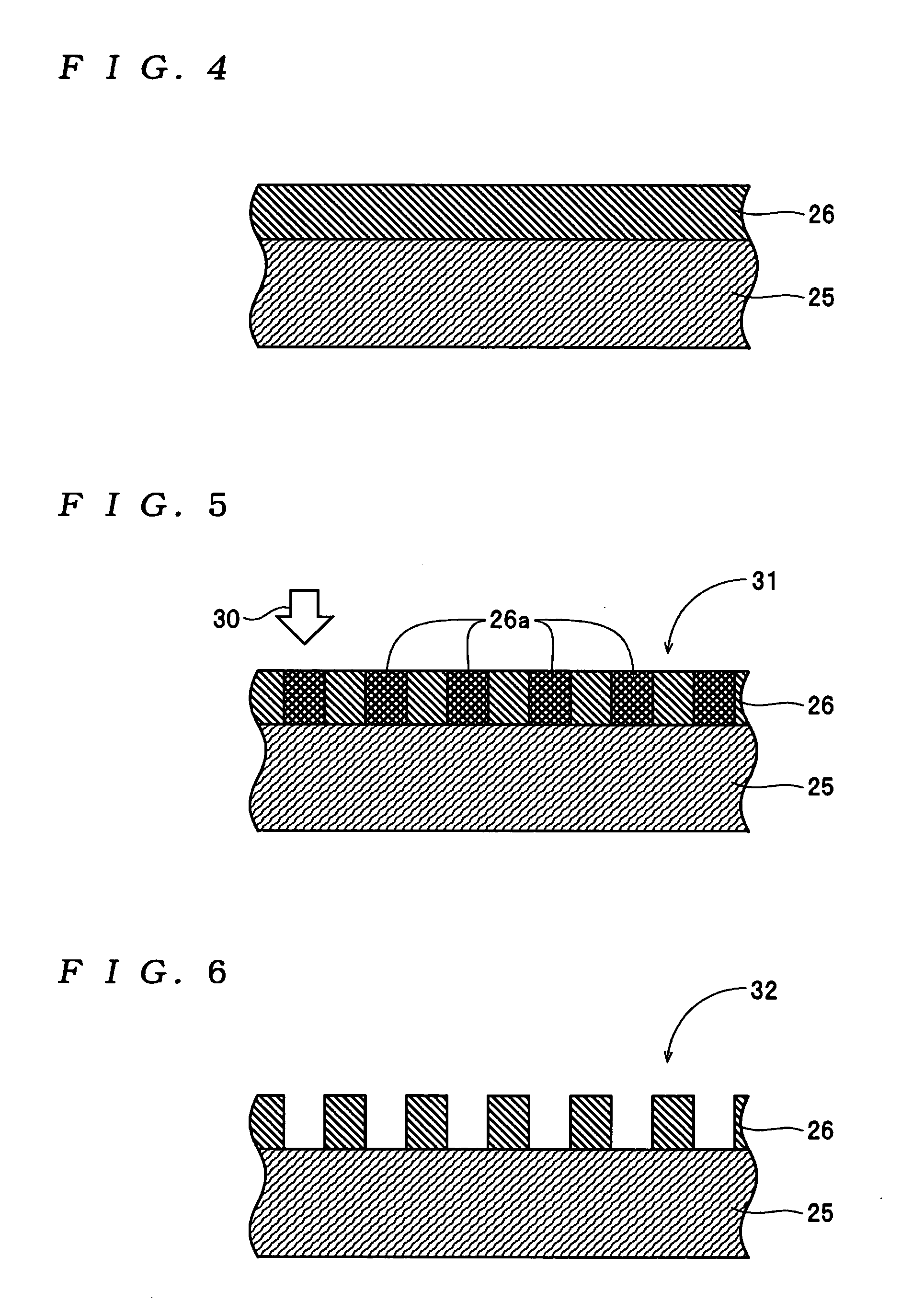Imprinting method, information recording medium-manufacturing method, and imprinting apparatus
a technology of information recording medium and imprinting method, which is applied in the field of imprinting method and imprinting apparatus, can solve the problems of deformation or incompleteness, conventional imprinting method, and substrate damage (crack), and achieve the effect of reducing temperature changes, reducing shrinkage difference, and reducing deformation
- Summary
- Abstract
- Description
- Claims
- Application Information
AI Technical Summary
Benefits of technology
Problems solved by technology
Method used
Image
Examples
Embodiment Construction
[0035] Hereafter, an imprinting method, a method of manufacturing an information recording medium, and an imprinting apparatus, according to a preferred embodiment of the present invention, will be described with reference to the accompanying drawings.
[0036] First, a description will be given of the arrangement of the imprinting apparatus 1 according to the present invention.
[0037] The imprinting apparatus 1 shown in FIG. 1 forms a concave / convex pattern 34 (see FIG. 12) by pressing a stamper 20 (see FIG. 3) against an intermediate 10 (see FIG. 2) by the imprinting method of the present invention, in manufacturing the information recording medium 40 shown in FIG. 13, and is comprised of a pressing machine 2, and a control section 3. In this embodiment, the information recording medium 40 is a discrete track-type magnetic recording medium, and formed with a concave / convex pattern 36 comprised of a large number of concentric data-recording tracks, servo patterns and the like separat...
PUM
| Property | Measurement | Unit |
|---|---|---|
| width | aaaaa | aaaaa |
| thickness | aaaaa | aaaaa |
| temperature | aaaaa | aaaaa |
Abstract
Description
Claims
Application Information
 Login to View More
Login to View More - R&D
- Intellectual Property
- Life Sciences
- Materials
- Tech Scout
- Unparalleled Data Quality
- Higher Quality Content
- 60% Fewer Hallucinations
Browse by: Latest US Patents, China's latest patents, Technical Efficacy Thesaurus, Application Domain, Technology Topic, Popular Technical Reports.
© 2025 PatSnap. All rights reserved.Legal|Privacy policy|Modern Slavery Act Transparency Statement|Sitemap|About US| Contact US: help@patsnap.com



